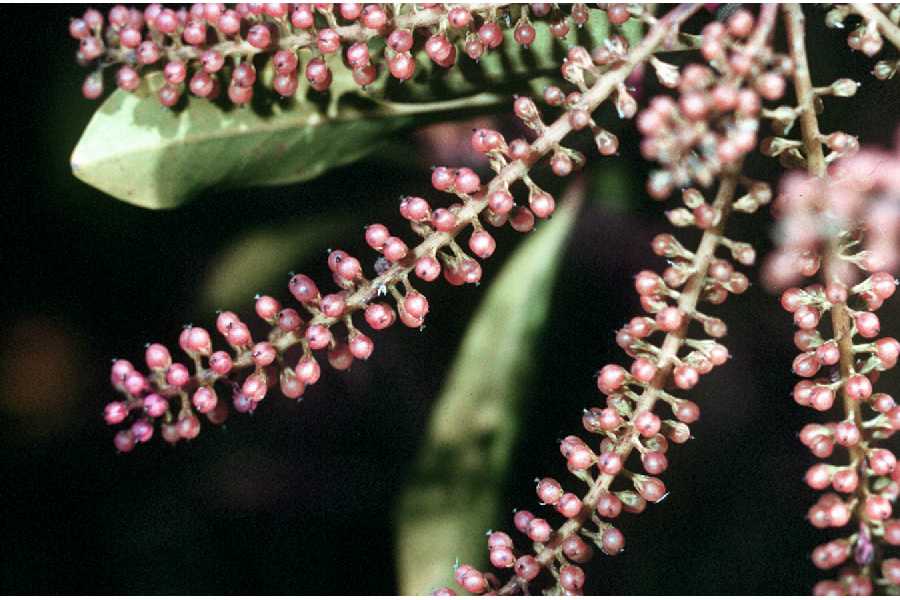Cyrillaceae
|
Cyrillaceae |
|
|
Shrubs or trees, evergreen or deciduous. Leaves usually borne towards ends of branches, alternate, simple; stipules absent; petiole present or absent; blade margins entire. Inflorescences terminal or axillary racemes, each flower in axil of caducous or persistent bract. Flowers bisexual; perianth and androecium hypogynous; sepals (4-)5(-8), connate at least proximally; petals (4-)5(-8), distinct; nectary disc present; stamens 5 or 10, outer (only) whorl antisepalous, distinct; pistils 1, 2-5-carpellate; ovary superior, 2-5-locular; placentation axile; ovules anatropous, unitegmic, tenuinucellate; styles 1, hollow; stigmas 2-5-lobed [unlobed]. Fruits berrylike or samaralike, dry, indehiscent. Seeds usually absent, sometimes 1 per locule, narrowly ovoid; seed coat absent; embryo straight; endosperm copious. Members of Cyrillaceae are common shrubs or trees in moist, acidic habitats of the southeastern United States. On morphological, anatomical, and embryological grounds, Cyrillaceae have long been considered closely allied to Ericaceae (W. S. Judd and K. A. Kron 1993); molecular work confirms this placement (A. A. Anderberg et al. 2002). The fruits of some Cyrillaceae, including our species, are frequently devoid of seeds; reproduction is largely by root sprouts (J. L. Thomas 1961).
|
|
